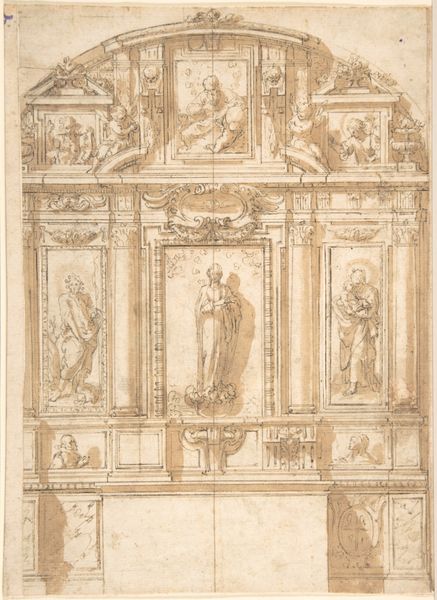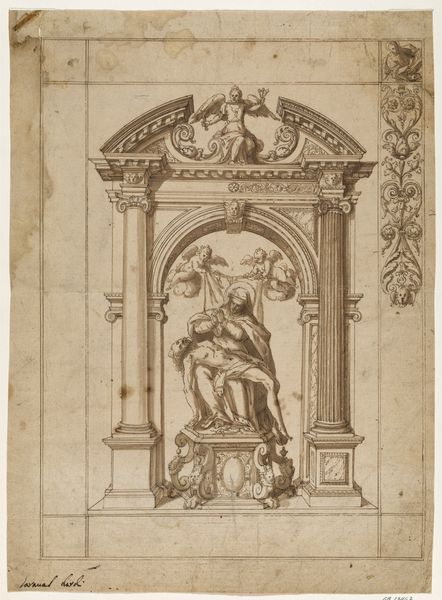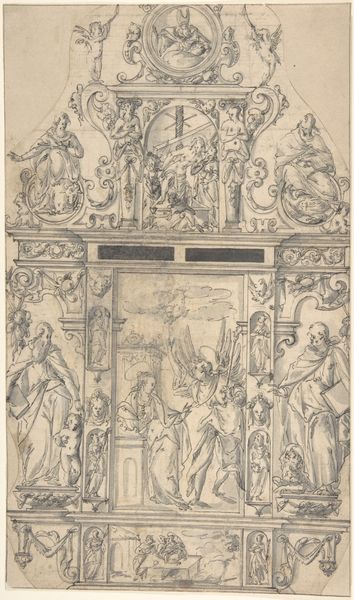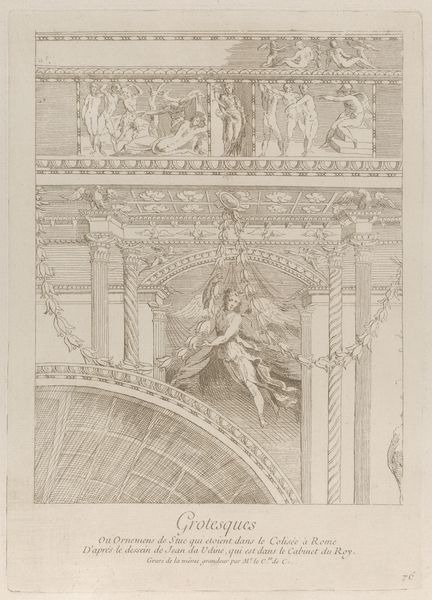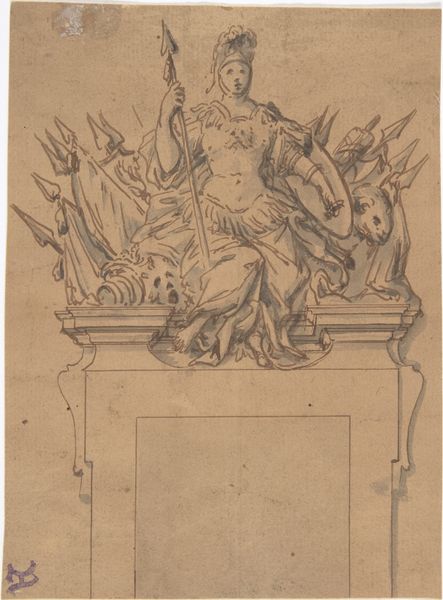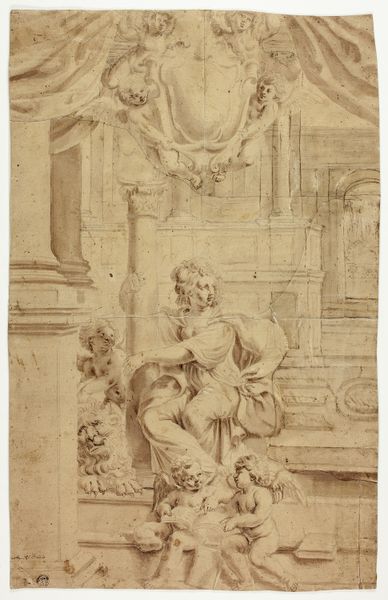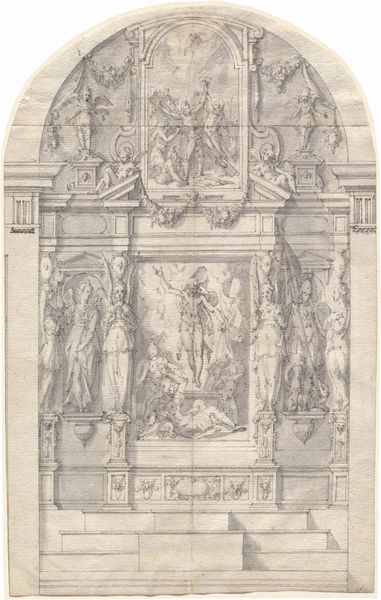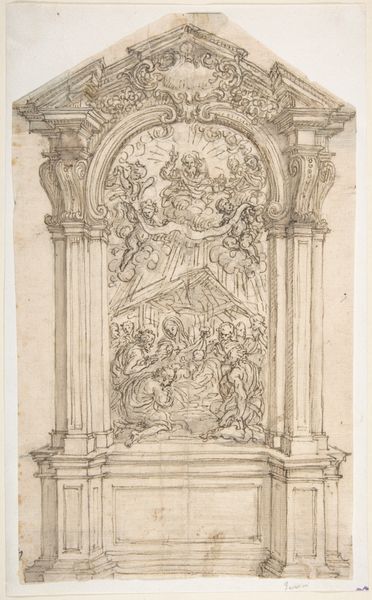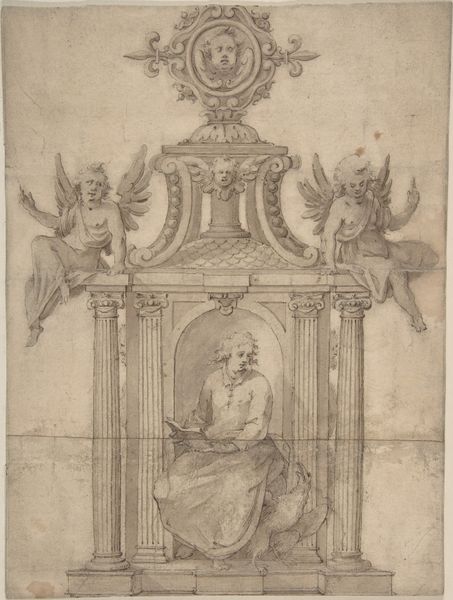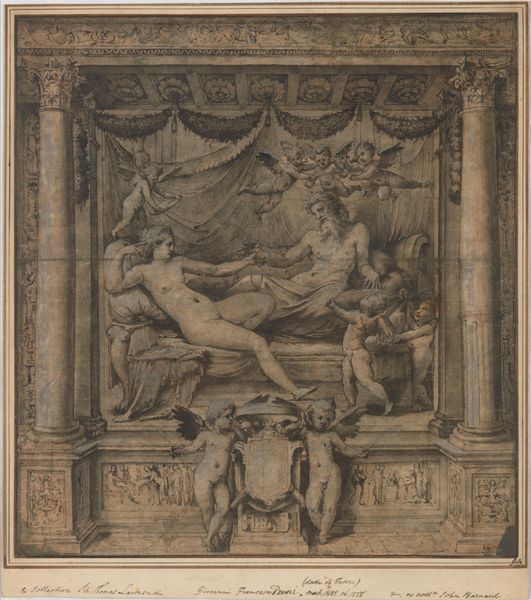
drawing, ink, indian-ink, pen
#
drawing
#
allegory
#
baroque
#
etching
#
figuration
#
ink
#
indian-ink
#
pen-ink sketch
#
pen
#
history-painting
Copyright: Public Domain
Curator: Immediately striking—the pen and ink seem to create a feeling of lightness, almost floating, in Pietro da Cortona’s drawing. Editor: It certainly possesses a delicate touch. This piece, titled “Moderation,” now residing at the Städel Museum, presents an allegorical figure in what looks like a preparatory sketch. Curator: Yes, an allegorical representation—such figures, for the learned viewer of the time, would immediately call up classical ideals. Look at the central figure; she embodies the principle of balance, controlling passion and intellect. Do you observe the objects she holds? Editor: She grasps a strange looking object. I see it almost as musical instrument with a central bar connecting at both ends of its length, each terminating point forming an end-stop to a line. Curator: Good eye—an instrument of measure, ensuring justice and proportionality, above all harmony. Notice the animals at her feet, a docile dog and a noble lion. These can be seen as stand-ins for human qualities – courage tempered by wisdom. They're a familiar visual vocabulary from the era. The two together are like two halves of a unified idea – courage tempered by wisdom, wild tamed, savage tamed. Editor: Interesting to see how da Cortona creates different surface textures with varying pen strokes—some areas shaded more densely to imply depth, particularly around the drapery, creating almost an emotional heaviness around the central figure’s shape, set against the detailed linear geometry of the pedestal. The design creates a tension I can see. Curator: Exactly, the rough hatching in the pen lines around the statue brings an otherworldly, dreamlike feel. Editor: Despite the preparatory nature, I feel a distinct composition at play. Cortona guides the eye upwards with these repeating visual motifs, from base to pinnacle. There is much to decode visually and metaphorically—which makes this drawing quite absorbing to engage. Curator: It offers a wonderful lens through which to appreciate the worldview of 17th century classicism. Its power remains today.
Comments
No comments
Be the first to comment and join the conversation on the ultimate creative platform.

